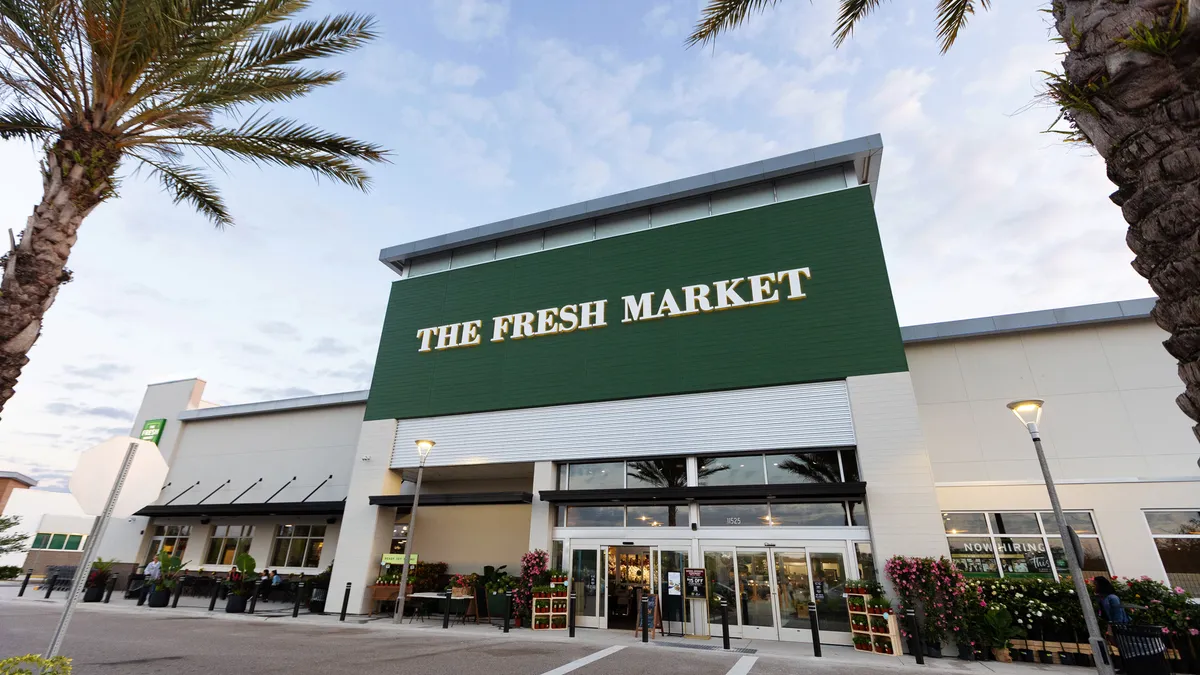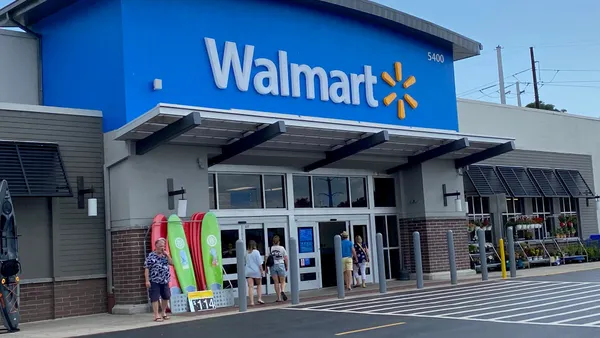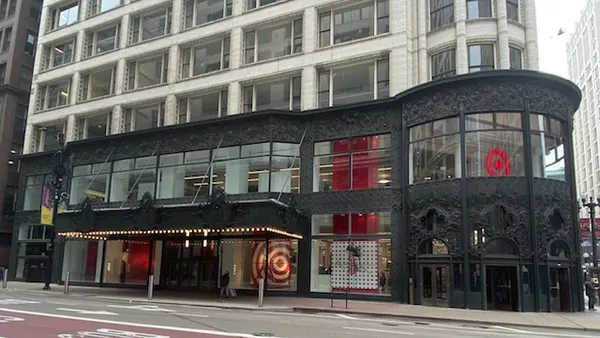Dive Brief:
- Spending at grocery stores rose 3.7% in April compared with the same period last year — the slowest year-over-year pace since July 2021 — according to estimated data released Tuesday by the U.S. Census Bureau.
- Grocery sales slipped 0.4 percent in April compared with the prior month, while overall retail and food sales moved forward at a monthly rate of 1.6%.
- Grocery sales have been trending downward in recent months as inflation has come off its peak but remained elevated by historical standards.
Dive Insight:
The federal statistics released this week suggest that the string of strong increases in grocery spending that kicked off in mid-2021 could be approaching an end.
The 3.7% year-over-year increase in spending at food and beverage stores recorded last month continues a steady decline for the metric, which stood at more than 8% for much of 2022 before beginning to lose steam in December.
Meanwhile, the monthly drop in grocery sales in April represents the first time that figure has been in negative territory since last April, when it declined 0.1%. Grocery sales were flat on a month-to-month basis in March ahead of the drop last month.
Grocery sales slowed month-to-month in April even as overall retail sales regained momentum during the month despite drops in discretionary areas like home furnishings, electronics and sporting goods.
The sales slowdown grocers have been seeing largely tracks the decline in grocery inflation the government has recorded since last summer, when grocery prices were leaping ahead at an annual pace that hadn’t been seen in decades. Overall inflation has also steadily come down on a year-over-year basis since mid-2022.
In a reflection of the impact inflation continues to have on shoppers even as it slows, 85% of people surveyed by Morning Consult in April said they’re worried about how rising prices are affecting their household budgets, Claire Tassin, retail & e-commerce analyst at the decision intelligence company, said in comments sent by email. The figure has increased by 6 percentage points since January, according to Tassin.
In another sign of how inflation is impacting people’s spending habits, a growing number of consumers have turned to buy now, pay later services to help manage their outlays on groceries.















